If you fish for wild trout in the American West, you likely know that beavers and trout often occur together, particularly in backcountry streams where both are largely left to their own devices.
On one of my favorite trout streams here in the Caribou Range of eastern Idaho, beavers and native cutthroat trout coexist throughout the watershed. Beavers use willow branches and twigs (and sometimes bigger trees, including pines and aspens) to construct intricate dams that slow water flow and improve trout habitat. Beaver ponds produce better growing and reproducing conditions for aquatic insects, and that benefits trout. They trap sediment and spread water out over the riparian zone, making for better conditions for both flora and fauna.
The big rodents’ dams have also been proven to assist in natural water storage and aquifer replenishment, creating more wet soils that are important to riparian vegetation that, in turn, can grow and shade trout water, providing relief to some of the impacts of a warming climate. Beavers are, in almost every instance, good for trout.
As it turns out, when both beavers and trout are exported halfway across the world, the beneficial relationship continues. The American beaver and the European brown trout have both been introduced in South America, and where beavers and trout occur together at the southern tip of that continent, the trout turn out to be bigger. In southern Chile’s Tierra del Fuego region, biologists have proven that introduced brown trout are direct beneficiaries of the construction activities of the introduced beavers.
According to a study put forth by Oregon State University researcher Ivan Arismendi, non-native brown trout living in Tierra del Fuego waters grow 14 percent faster when they live in watersheds where introduced beavers are present and active. Arismendi is originally from Chile but has been based in Corvallis since 2007.
“We show that beavers indirectly help with the growth of trout, potentially improving their survival,” said Arismendi, an assistant professor in the Department of Fisheries and Wildlife in the OSU College of Agricultural Sciences.
The outcomes, even in a locale where neither animal is native, are similar to those where both trout and beavers occur naturally. Beaver activity, according to the study, helps create better habitat for more energy-rich food sources that trout are known to eat. With more food, naturally, comes more growth for the trout. Even in remote Tierra del Fuego, where both the brown trout and the beavers are introduced from disparate parts of the world, this is a thriving relationship.
According to the study, which was published this month in the scientific journal Ecology and Evolution, trout living in waters where beavers had constructed dams are more likely to have larger sources of food available to them — amphibians like frogs, toads and salamanders also thrive in the slower waters of beaver-altered streams, and they provide a source of food that’s much more rare in naturally free-flowing streams in the region.
While trout were introduced in Teirra del Fuego in the early 1900s, the American beaver wasn’t introduced to Chile until the 1930s (it wasn’t introduced in neighboring Argentina until the 1940s). And while two non-natives now coexist in ways that are certainly beneficial to trout, that was an unexpected outcome, the study reads. Instead, beavers were introduced to the region with the intent of creating a felt industry from beaver fur. Since their introduction to Tierra del Fuego, beavers have since expanded their range to cover the entire island. On the Chilean portion of Tierra del Feugo (the other portion of the island is governed by Argentina), the beaver numbers are estimated to be about 41,000. An NPR report from 2011 suggests there may be as many as 200,000 beavers on all of Tierra del Feugo.
Beavers have done so well, that they have facilitated the invasion of other terrestrial animals, like the muskrat, which now provides a food source for a non-native population of American mink (and the subsequent creation of a mink fur harvesting industry).
While both brown trout from Europe and rainbow trout from North America were introduced to Tierra del Fuego, the browns are much more populous. In their native state, the rivers and streams of Tierra del Fuego are largely barren of nutrients needed to support large fish populations — these waters are notoriously cold and the average temperature of these rivers and streams rarely tops 60 degrees.
Perhaps that’s where beavers have had the greatest impact on non-native brown trout growth and success on Tierra del Fuego. By slowing the current and retaining sediment needed by aquatic insects and amphibians, the beavers have made habitat — and very likely, fishing — better for the exotic trout.
“Beaver dams create profound changes in streams enhancing the input and retention of organic matter, nutrients, and other elements,” the study reads. “The greater availability of food resources and suitable habitat for trout in sympatry is most likely related to the physical modifications caused by beavers. The higher macroinvertebrate production in sympatry is supported by evidence from sites where beaver are native and introduced. Higher macroinvertebrate production provides a key food source that is used by introduced trout and native fishes and it may influence their observed higher growth rates, as is also seen in North America.”
And that felt industry? It never took off. In fact, the Chilean and Argentine governments have been working for years to remove beavers from Tierra del Fuego, a move that may end up being economically impactful on the recreational fishing industry, given the outcomes of this study that shows beavers provide benefits to brown trout that wouldn’t otherwise exist.
Of course, the altruistic environmentalist would be quick to point out that trout, regardless of the species, aren’t native to the region, and that the recreational fishing industry in Tierra del Fuego is, itself, a completely contrived resource. That, of course, has nothing to do with the impacts beavers have had on the island. One researcher, Dr. Christopher Anderson of the University of North Texas and Universidad de Magallanes, is quoted as saying beavers are responsible for “the largest landscape-level alteration in the Holocene — that is, approximately 10,000 years,” on Tierra del Fuego.
Beavers on Tierra del Fuego have done so well because there are no natural predators on the island to keep their numbers in check. In North America, where the big aquatic rodents are native, their numbers are kept from exploding thanks to bears, mountain lions, wolves and coyotes.
So how does the study impact conditions today on Tierra del Fuego? Turns out, not much. What it does do, however, is provide a cautionary tale — trout do very well where beavers are present, even if the landscape isn’t meant to host either species.
“We provide evidence that two species with a particular ecosystem function in their native range may promote similar interactions in invaded systems even though they have not naturally occurred in sympatry,” the study concludes. “Hence, consideration of ecological and evolutionary histories among introduced species may improve the forecasting of invasion success of new species introductions and guide the identification of vulnerable ecosystems.”




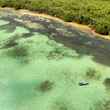
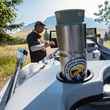

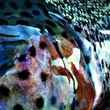



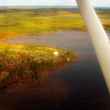




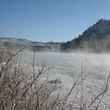
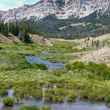



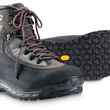
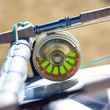



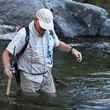
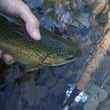

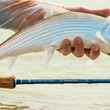
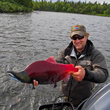
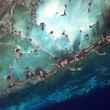
Comments
Hexmeister replied on Permalink
Multiple studies have shown that beaver activity on trout streams with lower-gradient flow, such as we have in Wisconsin, ultimately raises water temperature and causes trout populations to decline. (Although fishing in the beaver pond itself can, in the short term, be very good.) The point being that one has to be careful about making blanket assessments about the impact of beavers on a given watershed.....
Paul replied on Permalink
Spot on! In Wisconsin and the Midwest... a good beaver is a dead beaver! They can destroy or degrade good trout habitat with just one dam. People need to keep that in mind when the discussion of beavers and trout come to mind.
Mark Orlicky replied on Permalink
Minor item. The Brown Trout mentioned, the ones that are doing very well... many of those trout are sea running type. Yes, the seas are very fertile down near Tierra Del Fuego and the browns grow very large. But, it doesn't have anything to do with the addition of beavers to the area. The study director could also check how the browns did prior to the arrival of the beavers. What I've read is that the browns were introduced around 1910 or so. Prior to the beavers being added.
silvercreek replied on Permalink
Beaver do not always benefit trout streams.
In high gradient streams in the mountains, beaver can provide ponds that favor trout.
However, in the midwest in my home state of Wisconsin beaver harm trout stream. Their dams create three major problems. The first is that by damming our small streams that flow through our forests, the create pond that drown and kill the trees. These trees provide the shading that these stream need to maintain the cool water temperatures that favor trout. So the water in the ponds behind the dams become too warm for the brook trout that are native to the upper midwest.
Secondly, the dams cut off the brook trout below the dams from their spawning habitat so the population of brookies below the dam slowly declines.
Thirdly, with global warming, the maintenance of the shading for these creeks and the unblocked migration of trout is necessary in these tributaries to maintain healthy populations for fishing.
Our TU chapter has blown up beaver dams after the beaver have been trapped and the state of Wisconsin used to have a beaver abatement program on the streams in northern Wisconsin.
An Orvis article on beavers stated:
"Beavers build dams to provide protection from predators and to provide easy access to food, but the ponds that these dams create slow the current and expose the water to more intense sunlight exposure—both of which can lead to a rise in water temperature. These effects can be exacerbated by dark silt, which settles at the bottom of the pond and absorbs heat, and the removal of shade trees from the riverbank. In thermally sensitive low-lying rivers or where trout habitat is already marginal during the summer months, this warming and the accompanying decline in dissolved-oxygen levels can make a stream unsuitable for trout survival. This is why the Wisconsin DNR has been trapping beavers and blowing up dams for the past 35 years, especially in the northeastern part of the state. As Duke Welter—Trout Unlimited’s Western Great Lakes Conservation Coordinator and Outreach Coordinator of the Driftless Area Restoration Effort (DARE)—explains, “Beavers manipulate the system, and so do we.”
The Wisconsin effort is in part based the results of an 18-year project (1982-2000) by wildlife biologist Ed Avery, which studied the effects of removing 546 beaver dams from 32 miles of the Pemonee River and its tributaries. Avery’s findings were compelling: Summertime water temperatures were significantly cooler in 2000 than they had been in 1982; wild brook trout populations were 67% higher in spring and 17% in the fall; the average size of wild brookies increased from 7.6 inches to 8.9 inches; and the number of fish over 7 inches increased by an astonishing 311%. It’s easy to understand why anglers in the Badger State are in favor of keeping the number of beavers in check."
https://news.orvis.com/fly-fishing/beavers-good-bad-trout-might-surprised
Les Bouck replied on Permalink
Photo credit "Bering Land Bridge National Park" should read "Bering Land Bridge National Preserve."
Pages